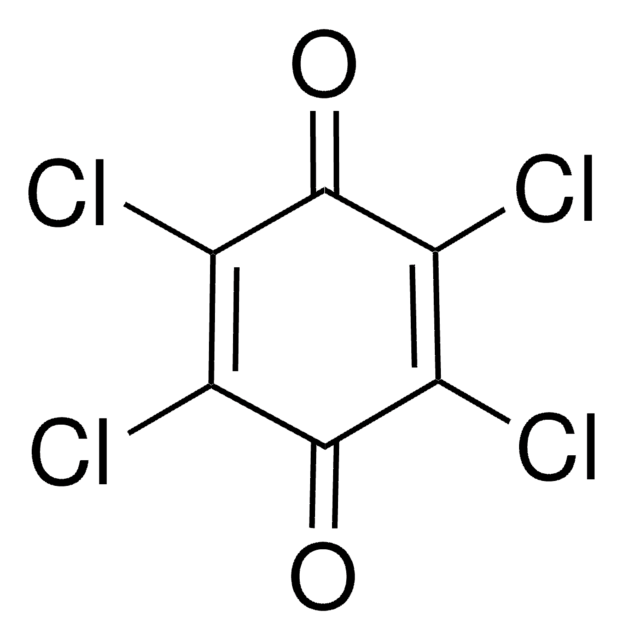おすすめの製品
グレード
technical grade
アッセイ
85%
bp
263 °C (lit.)
mp
100-104 °C (lit.)
SMILES記法
Oc1ccc(O)c(Cl)c1
InChI
1S/C6H5ClO2/c7-5-3-4(8)1-2-6(5)9/h1-3,8-9H
InChI Key
AJPXTSMULZANCB-UHFFFAOYSA-N
類似した製品をお探しですか? 訪問 製品比較ガイド
シグナルワード
Danger
危険有害性情報
危険有害性の分類
Eye Dam. 1 - Skin Irrit. 2 - Skin Sens. 1 - STOT SE 3
ターゲットの組織
Respiratory system
保管分類コード
11 - Combustible Solids
WGK
WGK 3
引火点(°F)
Not applicable
引火点(℃)
Not applicable
個人用保護具 (PPE)
dust mask type N95 (US), Eyeshields, Faceshields, Gloves
適用法令
試験研究用途を考慮した関連法令を主に挙げております。化学物質以外については、一部の情報のみ提供しています。 製品を安全かつ合法的に使用することは、使用者の義務です。最新情報により修正される場合があります。WEBの反映には時間を要することがあるため、適宜SDSをご参照ください。
Jan Code
224081-5G:
224081-VAR:
224081-100G:
224081-BULK:
この製品を見ている人はこちらもチェック
Carolyne Caetano Gonçalves et al.
Frontiers in microbiology, 11, 1081-1081 (2020-06-26)
Lignin is an abundant cell wall component, and it has been used mainly for generating steam and electricity. Nevertheless, lignin valorization, i.e. the conversion of lignin into high value-added fuels, chemicals, or materials, is crucial for the full implementation of
Vincent Libis et al.
ACS synthetic biology, 5(10), 1076-1085 (2016-10-22)
Detection of chemical signals is critical for cells in nature as well as in synthetic biology, where they serve as inputs for designer circuits. Important progress has been made in the design of signal processing circuits triggering complex biological behaviors
Z Mehmood et al.
Chemosphere, 34(11), 2281-2291 (1997-06-01)
The metabolism of the environmental pollutant and hepatocarcinogen 2,4-dichlorophenol (2,4-DCP) was studied using microsomal fractions and whole-cells of Saccharomyces cerevisiae containing human cytochrome P450 3A4. 2,4-DCP exhibited a typical type I substrate binding spectrum with a K, of 75 microM.
Guadalupe Albarrán et al.
Environmental science and pollution research international, 26(17), 17055-17065 (2019-04-19)
Radiolytic oxidation of 2,4-dichlorophenol (2,4-DClP) in aqueous solutions demonstrated that ·OH predominantly adds to the unsubstituted positions of the aromatic ring and that elimination of chloride at the 4 position is important because the -OH group enhances the electron density
Yangjian Zhou et al.
Water research, 192, 116857-116857 (2021-02-01)
Dissolved organic matter (DOM) is a ubiquitous component in effluents, DOM discharged with an effluent can affect the composition and properties of natural DOM in the receiving waters. As the photophysical and photochemical properties of effluent DOM can be changed
ライフサイエンス、有機合成、材料科学、クロマトグラフィー、分析など、あらゆる分野の研究に経験のあるメンバーがおります。.
製品に関するお問い合わせはこちら(テクニカルサービス)


